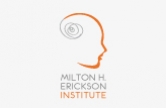OBSESIONS AND COMPULSIONS. BREAKING FREE FROM RIGIDITY WITH HYPNOSIS.
Despite the fact that Obsessive-Compulsive Disorder (OCD) is often considered as a single condition, it seems to be composed by several components. Obsessions are persistent ideas, thoughts, impulses or images that are experienced as intrusive and inappropriate. Such intrusive thoughts generate constant anxiety and discomfort, and are considered as an excessive or unreasonable product of the mind. Compulsions instead, are repetitive and rigid actions (such as washing hands, tidying up, controlling) or mental activities (such as praying, counting, mentally repeating words). The aim of these rituals is often that of preventing or reducing the anxiety and discomfort caused by obsessions. In a recent study researchers demonstrated that OCD produces lower activations in certain brain areas, such as orbital-frontal cortex, which are related to the development of flexible behaviors. It is possible that this lower activation contributes to development of stiff actions that are observable in the disease. Furthermore, this lower activation, is observable also in OCD patients’ relatives, demonstrating that this pathology can manifest itself in the whole family1. Notably, there is quite an overlap between the areas involved in OCD and those involved in hypnotic inductions2.
Hypnosis, in fact, turned out to be a valuable ally of several kinds of psychotherapies, such as cognitive-behavioral therapy, in the treatment of this condition. More in detail, most of the studies that employed hypnosis refer to “hypnotic dissociation”, that is the ability to separate a global experience in its components, to amplify consciousness on one component and to reduce it on the others. This kind of process is believed to increase cognitive flexibility while at the same time reducing the rituals’ rigidity (that is the fixation on certain ideas and behaviors). Several single case reports highlighted the fact that the use of dissociation proved itself to be useful in many OCD cases treated with hypnosis in conjunction with cognitive-behavioral therapy3,4. The cases of a girl and two young men with catastrophic obsessive thoughts are described along with the case of a female student forced to act time-consuming mental compulsions (mentally repeating certain words). In all reported cases, the adjunction of hypnosis to the classical psychotherapeutic process favored symptoms remission, giving back to patients their normal lives. More specifically, in the case of a young man obsessed by the thought of killing his mother, the treatment was quick (remission after 10 weeks of treatment) and stable in time (2 years follow up)4.
[1] Chamberlain S.R., Hampshire A., Suckling J., Fineberg N.A., Del Campo N., Aitken M., Craig K., Owen A.M., Bullmore E.T., Robbins T.W. and Sahakian B.J. Orbitofrontal Dysfunction in Patients with Obsessive-Compulsive Disorder and Their Unaffected Relatives. Science. 321(5887):421-422 (2008).
[2] Halligan, P.W., Athwal, B., Oakley, D.A., Frackowiak, R.S.J. Imaging hypnotic paralysis: implications for conversion hysteria. Lancet. 355:986– 987 (2000).
[3] Meyerson J. & Konichezky A. Hypnotically Induced Dissociation (HID) as a strategic intervention for enhancing OCD treatment. American Journal of Clinical Hypnosis. 53(3):169-181 (2011).
[4] Kellerman J. Hypnosis as an adjunct to thought-stopping and covert reinforcement in the treatment of homicidal obsessions in a twelve-year-old boy. International Journal of Clinical and Experimental Hypnosis. 29(2):128-135 (1981).
[5] Frederick C. Hypnotically facilitated treatment of obsessive-compulsive disorder: Can it be evidence-based? International Journal of Clinical and Experimental Hypnosis. 55(2): 189-206 (2007).
Hypnosis, in fact, turned out to be a valuable ally of several kinds of psychotherapies, such as cognitive-behavioral therapy, in the treatment of this condition. More in detail, most of the studies that employed hypnosis refer to “hypnotic dissociation”, that is the ability to separate a global experience in its components, to amplify consciousness on one component and to reduce it on the others. This kind of process is believed to increase cognitive flexibility while at the same time reducing the rituals’ rigidity (that is the fixation on certain ideas and behaviors). Several single case reports highlighted the fact that the use of dissociation proved itself to be useful in many OCD cases treated with hypnosis in conjunction with cognitive-behavioral therapy3,4. The cases of a girl and two young men with catastrophic obsessive thoughts are described along with the case of a female student forced to act time-consuming mental compulsions (mentally repeating certain words). In all reported cases, the adjunction of hypnosis to the classical psychotherapeutic process favored symptoms remission, giving back to patients their normal lives. More specifically, in the case of a young man obsessed by the thought of killing his mother, the treatment was quick (remission after 10 weeks of treatment) and stable in time (2 years follow up)4.
[1] Chamberlain S.R., Hampshire A., Suckling J., Fineberg N.A., Del Campo N., Aitken M., Craig K., Owen A.M., Bullmore E.T., Robbins T.W. and Sahakian B.J. Orbitofrontal Dysfunction in Patients with Obsessive-Compulsive Disorder and Their Unaffected Relatives. Science. 321(5887):421-422 (2008).
[2] Halligan, P.W., Athwal, B., Oakley, D.A., Frackowiak, R.S.J. Imaging hypnotic paralysis: implications for conversion hysteria. Lancet. 355:986– 987 (2000).
[3] Meyerson J. & Konichezky A. Hypnotically Induced Dissociation (HID) as a strategic intervention for enhancing OCD treatment. American Journal of Clinical Hypnosis. 53(3):169-181 (2011).
[4] Kellerman J. Hypnosis as an adjunct to thought-stopping and covert reinforcement in the treatment of homicidal obsessions in a twelve-year-old boy. International Journal of Clinical and Experimental Hypnosis. 29(2):128-135 (1981).
[5] Frederick C. Hypnotically facilitated treatment of obsessive-compulsive disorder: Can it be evidence-based? International Journal of Clinical and Experimental Hypnosis. 55(2): 189-206 (2007).

